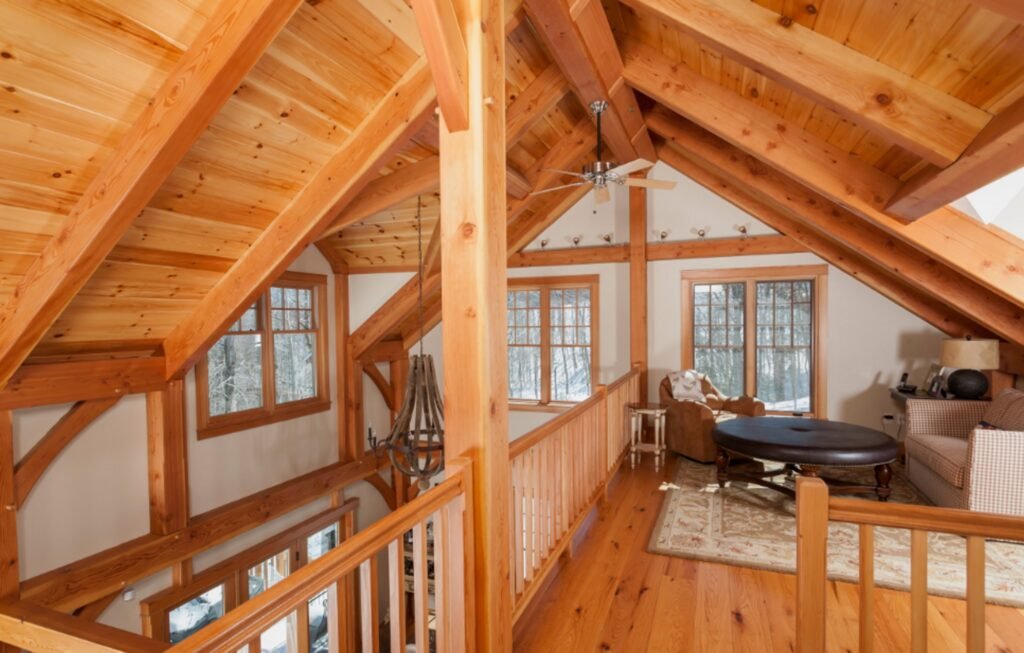Framing a house is not an easy task. It requires technical and professional approach. You need years of apprenticeship and experience to learn how to frame a house.
However, the basics of beginning framing, setting a work calendar and the estimation of materials can be learned within several hours.
Photo by Davis Frame Company – Look for living room pictures
First, you need a list of framing materials. Estimating materials for house framing requires accurate measurements.
Therefore, it is not indicated to draw up only a sketch and add a few measurements. You need a good blueprint for your construction project and a good and precise blueprint includes specifics such as earthquake or hurricane retrofitting, is to scale and is approved by your local authorities.
So, we decided that having a good and professional blueprint is a must, let’s get back to our subject.
FRAMING a HOUSE
The framing process of any construction takes place only after the house foundation has already been laid and before plumbing and electrical utilities are positioned and installed. In fact, the frame can be considered the
building skeleton. Frame will support the entire house load such as walls and roof, therefore a framework poorly made will lead to many future problems such as walls that are not flat, doors that do not open and close properly or squeaky floors.
Wooden House Advantages | How To Build A House (howtobuildahouseblog.com)
HOUSE FRAMING MATERIALS
1| Lumber:
We can mention two types of framing, wooden framing and metal framing. So, lumber is one of the main materials and perhaps the most commonly used material used in framing.
Sill Plates: Sill plates have an extremely important role. They are usually made of 2×4 inch boards and sit
Floor Joists: Although many floor joists are made sometimes from composite such as “I” beams, lumber remains the traditional and preferred material. So, usually wooden floor joists are made from 2×8 inch or 2×12 inch boards.
Sub-Floor: Plywood is commonly, screwed or nailed to the floor joists. It will form the house sub-floor.
Walls: Lumber is used massively to frame your home walls. One of the most common choices is 2×4 inch wooden boards and they sit under the house walls preventing them from sliding.
2| Fasteners:
There are different types of common fasteners such screws, nails and glue. Their role is to hold all the framing materials together. However, if you intend to use a nail gun, you need a lot of gun nails. You need also, clip nails that are very useful to protect large wooden frame pieces to split.
Different nail types such as button cap brand are very useful in holding TYVEC or tar paper in place.
Also, you can have hold-down straps or anchor bolts. They are mainly used to secure the structure of your home walls to the house foundation.
Rim joist hangers are generally used to in the floor joist connection.
You need perhaps, straps, tie downs and hurricane clips.

